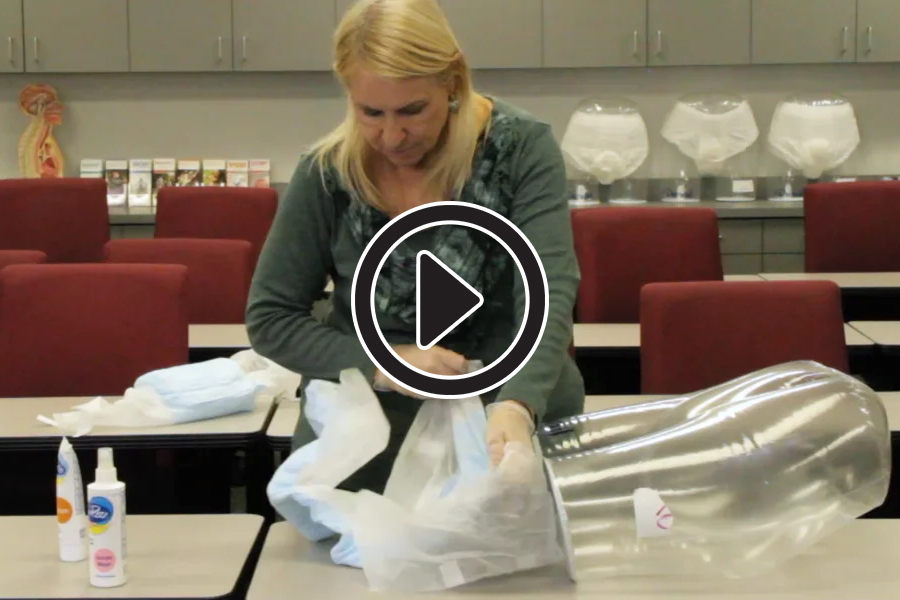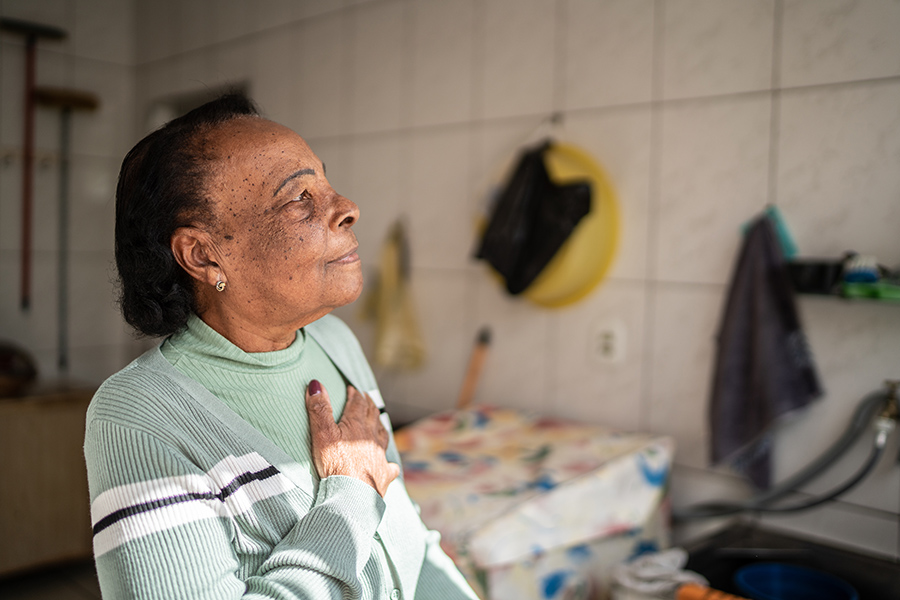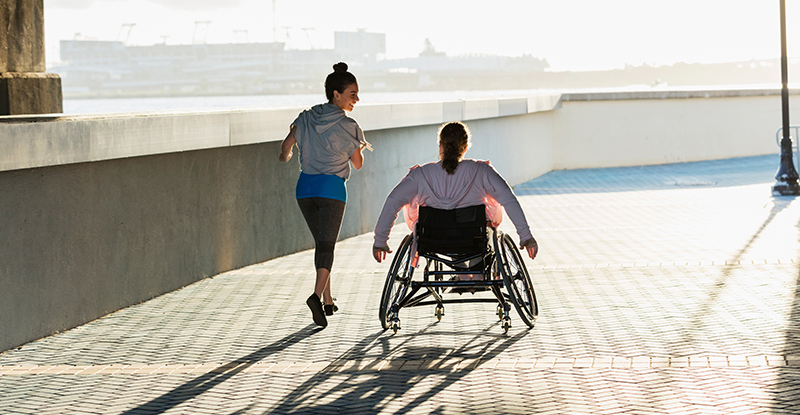Plan Ahead: Three Key Steps for Aging in Place
There is no wrong time to think about, or plan for, aging in place. Many of us wish to stay in our own homes as we age, and to maintain independence for as long as possible. By starting early, you can organize the resources and coordinate the care you might need before it becomes essential. Planning ahead also allows you to make important decisions while you are healthy, instead of while you are trying to navigate an episode of care.
Here are three important steps for aging-in-place planning:
Step 1: Think about the kinds of help you need now and might want in the future.
Explore home-based care services in your community, as well as any complimentary supports for aging in place. Find out what they cost. Planning ahead also gives you time to set up your home to meet your needs as you age.
Home health and personal care services aren’t the only services you might need. Could you use help cleaning your home? Are there areas of your home that require you to climb a ladder to clean? Do you need help tending your yard or gutters? Do you struggle to cook? If you could use an extra hand with certain tasks now, chances are you’ll need even more help as you age.
Step 2: Think about the illnesses you or your loved one have, as well as illnesses you may be at risk for.
If you or your loved one has diabetes or heart disease, now is the time to approach your doctor about aging with these diagnoses. Explore how the illness could make it hard for you or your loved one to get around or take care of themselves in the future. Your health care provider can help answer any questions you may have.
Do you have a family history of other health conditions, such as Alzheimer’s or osteoporosis? It may be worth having a conversation with your doctor about aging with any of the health conditions prevalent in your family tree. Share your goal of aging safely in place with your doctor. Talk with your family, friends, and other caregivers about what support is needed for you to stay in your home.
Step 3: Be prepared for change.
No matter how much we prepare, changes to our health can be unexpected. Recognize that your health needs may suddenly change, and your in-home support needs may shift.
If you find yourself in an emergent situation, home health may have limitations that don’t meet your needs. Be realistic with your expectations for aging safely in place, and plan to revisit the decision as your needs change over time.
What are Aging in Place Supports?
Home-based care includes: home healthcare, home care/personal care, and other support services. Together, these supports can help you stay at home while you age and to live as independently as possible.
Home Healthcare
In-home healthcare services may be short-term — for someone who is recovering from an operation, for example — or long-term, for people who need ongoing assistance.
Finding a Home Healthcare Provider
This online tool can help you find and compare Medicare-certified home health agencies. It’s always a good idea to ask for references before hiring a particular person or company – including checking for any complaints filed against a company with state and local agencies that regulate health services.
This worksheet from the National Institute on aging Questions To Ask Before Hiring a Care Provider gives considerations to keep in mind when choosing a home healthcare service.
Home Care
Home care, or personal care, refers to services and supports that can be performed by those who are not licensed medical professionals. These types of services range from cooking, grocery shopping, and housekeeping to transportation to/from doctors appointments, medication reminders, and help with activities of daily living (bathing, eating, dressing etc.). While these needs may be met in part by family members, the range of needs can sometimes exceed the support loved ones are able to easily or effectively provide. Home care services can be provided by non-medical staff, such as home care aides or personal care assistants, and they are typically paid directly by the individual or their long-term care insurance. Medicaid may also cover home care if the individual is eligible.
Finding a home care provider
The Eldercare Locator can help you find resources in your area, including in-home help and transportation. It can also provide information about ways to pay for care. Visit the Eldercare Locator online, or call 800-677-1116. You can find more information about personal care services here.
How much will it cost to age in place?
How you pay for care depends on both your health insurance and your their financial situation. Your financial situation can impact your eligibility for assistance programs, and the kinds of services they use. Home-based services can be expensive, but they may cost less than moving into a residential facility, such as assisted living or a nursing home.
How people pay for care depends on their financial situation, their eligibility for assistance programs, and the kinds of services they use. People often rely on a variety of payment sources, including:
- Personal funds, including savings, a pension or other retirement fund, income from investments, or proceeds from the sale of a home.
- Federal and state government programs, such as Medicare, Medicaid, and the U.S. Department of Veterans Affairs (VA). Visit Benefits.gov for more information about government programs for health care and financial assistance.
- Private financing, including long-term care insurance, reverse mortgages, certain life insurance policies, annuities, and trusts.
Read more about the options for paying for long-term care.
Making your home safe and accessible
Many falls are caused by common hazards in the home that are easy to fix. Start with this safety checklist as a room-by-room guide for preventing falls in the home:
Floor Safety
Is there a straight path through each room?
• Rearrange furniture to create a straight path through every room.
Are there throw rugs or area rugs on the floor?
• Use double-sided tape or non-slip rug pads to secure them firmly.
Do you step over or around wires or cords?
• Prevent tripping by coiling or taping cords and wires next to the wall.
Are there objects stacked on the floor?
• Move any papers, books, shoes, boxes, blankets or other objects off the floor.
Stair Safety
Are there objects stacked on the stairs?
• Keep stairs clear by removing all shoes, books or other objects from the stairs.
Is there any loose or torn carpet on steps?
• Reattach loose carpet, or remove carpeting and attach non-slip safety treads or safety tape instead.
Are there handrails on both sides of the stairs?
• Make sure full-length handrails are firmly attached on both sides of the stairs. Tighten or replace loose hand rails.
Is there a light over the stairway, with light switches at both top and bottom of the stairs?
• Have an electrician install a light over the stairs to keep it well-lit, with light switches at both top and bottom of the stairs. Use night lights in surrounding outlets.
Are the stairs easy to see in low light?
• Paint or tape a contrasting color strip on the top edge of steps to make them easier to see in low light.
Kitchen Safety
Are there commonly used items on high shelves?
• Rearrange cupboards to keep commonly used items on easy-to-reach shelves (approximately waist level).
Is there a sturdy stepstool available?
• Make sure there is a sturdy stepstool available with a bar to hold onto. Never try to use a chair as a stepstool.
Bedroom Safety
Is there a light right next to the bed?
• Move a lamp close to the bedside, so that there is a light within easy reach. If you live in an area where electricity sometimes goes out, keep a flashlight next to the bed.
Is there a lit pathway between the bed and the bathroom at night?
• Add night lights or glow-in the dark tape to light the way to the bathroom at night.
Bathroom Safety
Are there non-skid shower mats or safety treads in the showers or tubs?
• Add a non-slip rubber mat or non-skid strips to the shower or tub floor.
Are there secure grab bars to help maneuver in and out of the tub, or up from the toilet?
• Have a professional install grab bars next to the toilet and inside the tub or shower.
Is there a transfer bench to help maneuver into the tub?
• Tub sides can sometimes be too high to step over. Sit on a bench outside the tub, then slide across the seat safely into the tub.
Is there a chair in the shower?
• For individuals who have difficulty balancing or standing for long periods of time, a shower chair can provide stability.
Other Household Tips
Is the house brightly lit?
• Replace low-watt light bulbs with fluorescent or bright white bulbs.
Are shoes worn inside and outside the home?
• Wear shoes at home whenever possible. Going barefoot or wearing socks or slippers increases fall risk.
More Resources for Aging in Place
For more resources for aging in place, visit the National Institute on Aging. Here you will find home safety tips for older adults, and detailed information with robust aging in place resources.
Sources include:
- https://www.nia.nih.gov/health/aging-place
- https://www.nia.nih.gov/health/aging-place/aging-place-growing-older-home
- https://www.nia.nih.gov/health/caregiving/services-older-adults-living-home
- https://www.shieldhealthcare.com/community/caregivers/2022/05/12/aging-safely-at-home/
- https://www.shieldhealthcare.com/community/health_care_professionals/2023/11/17/home-healthcare-or-home-care-whats-the-difference/






















